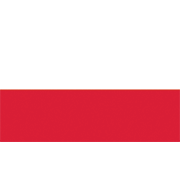Fiscal subject related
In response to public consultations held in April 2025, the Polish Ministry of Finance released a new package of documents on May 30, 2025, related to the rollout of mandatory B2B e-invoicing via the National e-Invoicing System (KSeF).
What was published?
- A new draft law: KSeF 2.0 Project,
- Two implementing regulations:
· Identification rules for e-invoice issuers,
· Document authentication requirements,
- Results from April 2025 public consultations,
- Impact assessments for the new law,
- Introduction of a deposit system and changes to VAT settlement timelines,
- An updated ZAW-FA form for managing user permissions,
- Natural persons added as recognized buyers in B2B transactions,
- Adjustments to micro-business limits: simplified threshold of PLN 10,000/month, removing the PLN 450 per-invoice cap,
- More relaxed rules for Offline24 mode,
- Clarifications on transactions that will not fall under KSeF obligations.
Timeline:
May 2025
- Continued public consultations,
- Draft of the new FA(3) invoice format.
June 2025
- Publication of updated draft legislation,
- Release of API documentation and testing timeline,
- Final version of the FA(3) schema.
July 2025
- Final law to be approved.
End of September 2025
- Public testing phase of KSeF 2.0 API begins.
November 2025
- Taxpayers can apply for issuer certificates,
- Public testing of KSeF mobile app,
- KSeF 2.0 production environment becomes available.
Go-Live Phases:
- February 1, 2026: Mandatory for large businesses (with over PLN 200 million turnover in 2024),
- April 1, 2026: Mandatory for all other taxpayers.
Additional Rollouts:
- August 1, 2026: Required to include KSeF invoice IDs in bank transfers,
- January 1, 2027:
· Microbusinesses must use KSeF if issuing over PLN 10,000/month,
· Penalty system starts for businesses that were required to join in 2026,
· Offline24 mode becomes a permanent option, allowing next-day invoice submission (including split payments). Special approval will be required starting November 1, 2025,
· A standardized QR code must be included on all printed or PDF versions of e-invoices,
· Delayed requirements begin:
§ Reporting e-invoices through cash registers,
§ Enforcing KSeF number on invoice payments,
§ Penalties for non-compliance with KSeF rules,
· Optional rollout of B2C e-invoicing via KSeF.
Other news from Poland
Pro Forma Invoices and E-invoicing: what changes after February 1, 2026?
 Poland
Author: Nikolina Basić
Poland
Author: Nikolina Basić
Pro forma invoices will continue to be allowed as non-tax, purely informational business documents, but they will not be issued or processed in KSeF because they are not recognized as invoices under the VAT Act. From 2026 onwards, only legally defined VAT invoices will pass through KSeF, while pro formas may still be shared externally (PDF, email, systems) as offer or preview documents. For many y... Read more



New document was uploaded: S4F backoffice installer
S4F backoffice installer is intended for users who are installing the software for the first time. Please make sure to obtain latest version of installer and to apply all subsequent patches that are released subsequently. This package contains instruction, release notes, changelog and software packages required for deployment of this software component. This version of the Backoffice installer supports the following countries: Austria, Bulgaria, Croatia, France, Italy, Poland, Portugal, Romania, Slovakia and Slovenia. Read more
Subscribe to get access to the latest news, documents, webinars and educations.
Already subscriber? Login


Ministry of Finance of Poland Launched Demo of KSeF 2.0 Taxpayer Application
 Poland
Author: Nikolina Basić
Poland
Author: Nikolina Basić
On November 15, 2025, the Polish Ministry of Finance released the KSeF 2.0 Taxpayer Application demo for testing before its February 1, 2026, launch. Users can issue and manage invoices in a simulated environment. On November 15, 2025, the pre-production environment (Demo) of the KSeF 2.0 Taxpayer Application was made available by Polish Ministry of Finance. The demo version allows users to test t... Read more



Poland prepares for Mandatory B2B E-Invoicing with new KSeF Tools- Certificates and Authorizations Module (MCU)
 Poland
Author: Nikolina Basić
Poland
Author: Nikolina Basić
Starting February 1, 2026, Poland mandates B2B invoicing via the National e-Invoice System (KSeF). To support this, the Ministry of Finance released key tools, including the MCU for managing access and digital certificates, which are essential for KSeF 2.0 access. Starting February 1, 2026, Poland will require businesses to use the National e-Invoice System (KSeF) for B2B invoicing. To help compan... Read more



E-invoicing in Poland: Ministry of Finance launches demo version of KSeF 2.0 API
 Poland
Author: Nikolina Basić
Poland
Author: Nikolina Basić
Poland’s Ministry of Finance has launched the pre-production (Demo) environment for the new KSeF 2.0 API, enabling businesses and software providers to test integrations under real authentication conditions. The demo, accessible at ksef-demo.mf.gov.pl, mirrors live system functionality without legal effects, supporting companies in preparing for mandatory e-invoicing rollout The Ministry of Financ... Read more



Regulation update in Poland: expansion of software-based cash registers
 Poland
Author: Nikolina Basić
Poland
Author: Nikolina Basić
Poland has expanded the scope of businesses eligible to use software-based cash registers under amendments effective April 1, 2026. The updated regulation adds sectors such as car washes, automated delivery systems, self-service ticketing, and electronic parking services, further advancing the country’s digital tax infrastructure modernization Poland’s authorities have officially published a... Read more



New SENT system rules in Poland will cover clothing and footwear from March 2026
 Poland
Author: Nikolina Basić
Poland
Author: Nikolina Basić
Starting March 17, 2026, Poland’s SENT system—which monitors road and rail transport of goods—will expand to include clothing and footwear. This change comes from a regulation issued by the Minister of Finance and Economy on September 10, 2025. The SENT system will now require reporting for shipments of: Knitted or crocheted clothing (Chapter 61 of CN) over 10 kg Non-knitted clothing (Chapter... Read more


